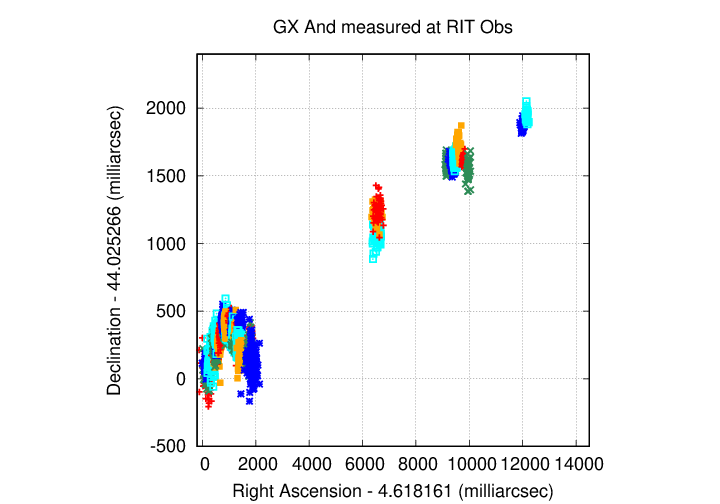
On the night of Jul 19/20, 2024, under very good conditions, I acquired images of the recurrent nova T CrB. This star undergoes outbursts at long intervals of 80 years or so. Its next outburst is predicted to occur soon, perhaps in 2024, and so I've joined the crowd who are monitoring it.
T CrB is still in quiescence, at V = 10.10 this evening, about the same as last night.
I also measured the brightness of asteroid (1367) Nongoma for a few hours, as part of a project to determine its rotation period. Its magnitude was about r' = 14.9, some 0.4 mag brighter than it was last night. Hmmmm.
Finally, I acquired 50 images of GX And in order to measure its position, as part of an on-going parallax project.
This recurrent nova brightens from by about 8 magnitudes (!), from V = 10 to about V = 2, around every 80 years. Will we see another outburst this summer?
These observations involved:
Notes from the night:
The picture below shows a cropped image of the field of T CrB from Jun 14/15, 2024. The field of view is about 20 arcminutes across.

I've marked the location of several comparison stars, with magnitudes and names taken from the AAVSO's chart.
star name B V
------------------------------------------------------
A 000-BJS-901 11.190 10.566
B 000-BBW-805 11.840 11.187
C 000-BPC-198 13.049 12.336
--------------------------------------------------------------------------
When the target is centered, the finder TV shows this field:

Here's the sky background over the course of the run. No clouds!
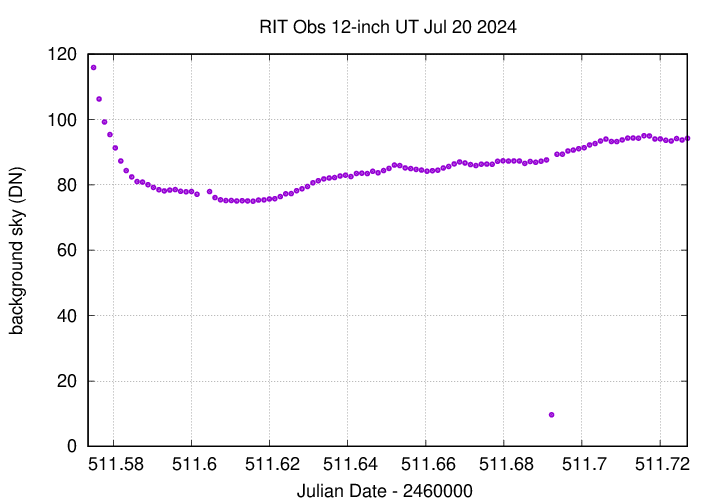
The FWHM was steady in V.
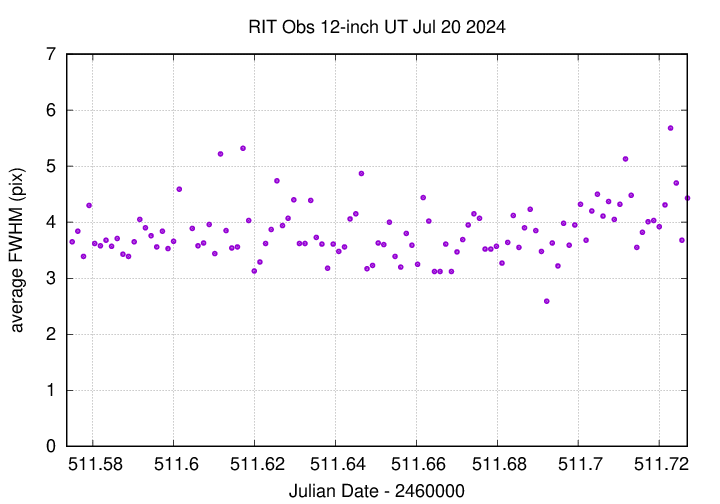
The graph below shows changes in the photometric zeropoint of an ensemble solution of the instrumental magnitudes over the course of the run.
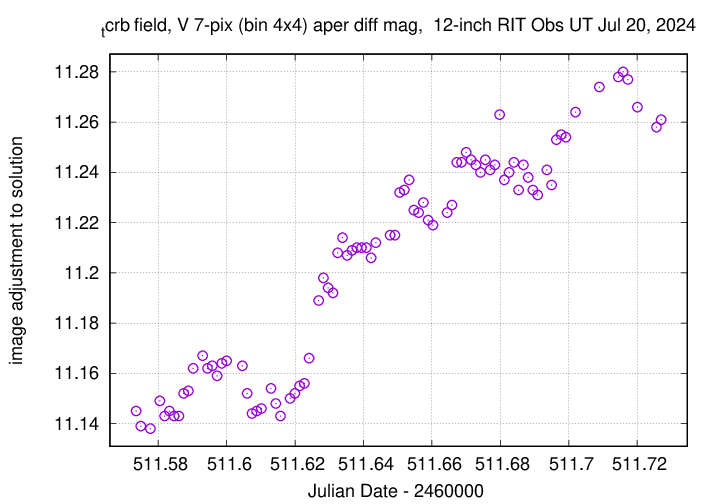
Using aperture photometry with a radius of 7 pixels in V filter (binned 4x4, each pixel is 1.036 arcsec, so a radius of 7.3 arcsec), and 7 pixels in B filter (binned 4x4, each pixel is 1.036 arcsec, so a radius of 7.3 arcsec), I measured the instrumental magnitudes of a number of reference stars and the target. Following the procedures outlined by Kent Honeycutt's article on inhomogeneous ensemble photometry, I used all stars available in each image to define a reference frame, and measured each star against this frame.
Sigma-vs-mag plots show that the floor in V-band was about 0.004 mag, which is good. In B-band, it was 0.004.
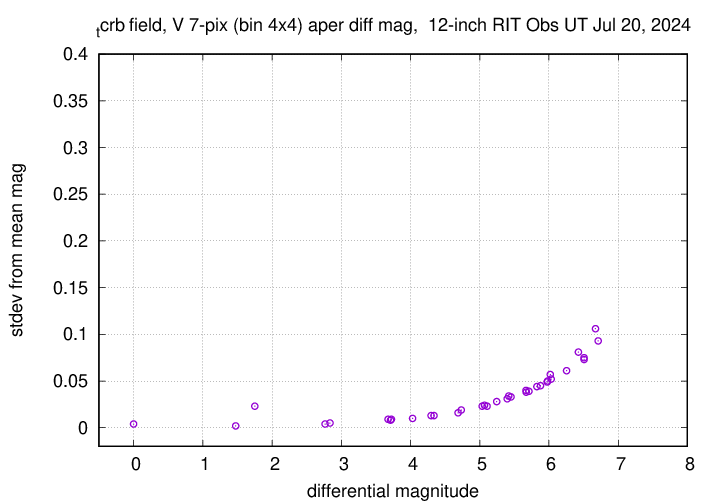
The measurements show relatively steady brightness, with a couple of tiny, brief bumps.

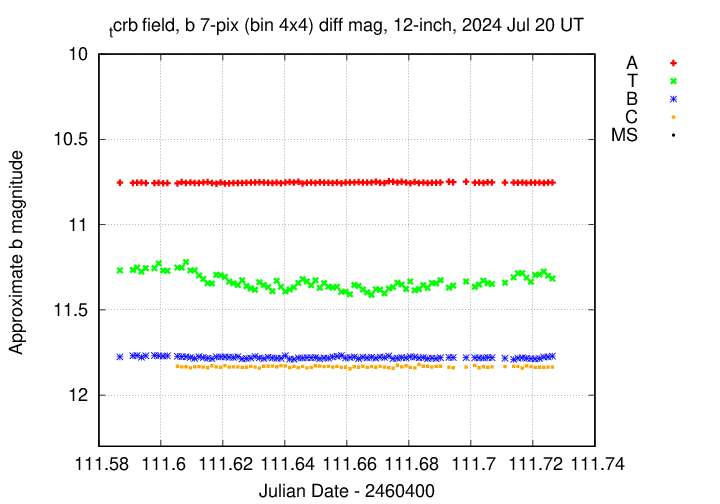
I've submitted these measurements to the AAVSO.
Not much is known about this asteroid. A set of seven nights of measurements of its light curves -- see Wisniewski, W. Z., et al., Icarus, 126, 395 (1997) -- suggests a period longer than one day, with short-term variations up to 0.2 mag.
A colleague mentioned that he might be preparing a campaign to try to pin down the rotation period, but the object is pretty faint: its V magnitude is around 15.5. Could I contribute? I have been taking measurements when I can to help out.
These observations involved:
On this night, the object was near position
RA = 21:05:39.6 Dec = +11:04:02 (J2000)
I observed for a bit more than three hours, in very good conditions.
Here's the sky during the observations. The drop near the end is caused by moonset.

The ensemble zero-point adjustment factor shows almost no scatter -- good!
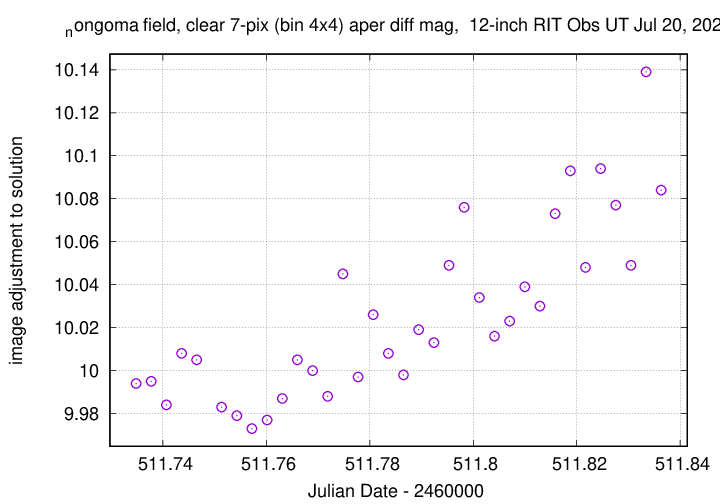
I was able to detect Nongoma clearly in all the images. Using a set of several nearby stars with magnitudes a bit brighter than the target, and colors 0.7 < (B-V) < 0.9, I calibrated the unfiltered measurements to the APASS9 r' passband. The asteroid had an average value of about r' = 14.90. The bump from JD 111.81 - 111.83 is due to the asteroid passing in front of a faint background star, I believe.

Like Ross 248, GX And is a nearby (binary) star which will be the target of a parallax project in the coming year. One of the two components is bright -- about mag V = 8 -- so one must use short exposures to prevent it from saturating the detector. That may mean that this system isn't as easy to measure as Ross 248 or some others.
These observations involved:
The object is currently close to this position:
RA = 00:18:28.4 Dec = +44:01:31 (J2000)
but it does have a very high proper motion.
A chart of the field is shown below. The size of the chart is about 41 x 27 arcminutes. The noisy area at right (West) is the shadow of the guider's pickoff mirror.

The two components of the GX And binary sit inside the box. I've marked the location of several comparison stars as well.
star UCAC4 B V r ----------------------------------------------------------- A 671-001473 9.939 9.790 B 670-001639 9.413 8.472 C 671-001509 12.712 11.421 11.001 -----------------------------------------------------------
I took a photo of the finder TV's screen when pointing to GX And; this could be a useful reference for the future:
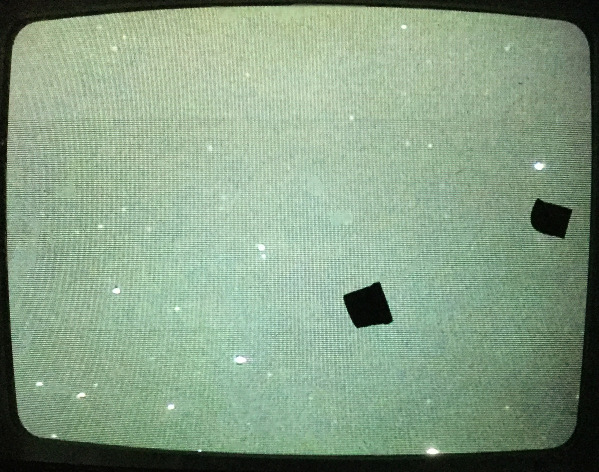
Using the same techniques as described for earlier nights, I matched detected stellar positions to the Gaia DR2 catalog. In this case, I used only stars within a "smaller" subset of the full catalog around the target, those no more than 10 arcminutes away from it.
The target is moving to the upper-right with time, and clearly shows the back-and-forth motion due to parallax.
